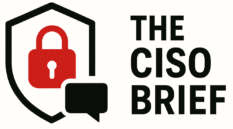Fast Facts
-
Exposed Vulnerabilities: Approximately 35,000 solar power systems are exposed online, making them susceptible to potential remote attacks due to over 90 identified vulnerabilities, particularly among products from firms like Sungrow, Growatt, and SMA Solar Technology.
-
Geographical Distribution: More than 75% of these internet-exposed devices are located in Europe, with a significant portion in Asia, reflecting global vulnerability in solar energy infrastructure.
-
Device Types at Risk: The most commonly exposed devices include SMA Sunny Webbox (10,000 units), Fronius inverters (4,000), and others, highlighting specific products that need urgent security attention.
- Potential Threats: While not all exposed devices can be easily hacked, many carry vulnerabilities, exemplified by the SolarView Compact which has been exploited in botnet attacks; thus, manufacturers recommend ensuring devices are not internet-accessible.
Problem Explained
Recent research from cybersecurity firm Forescout reveals alarming vulnerabilities within approximately 35,000 solar power systems linked to the internet, making them susceptible to remote cyberattacks. This study particularly highlights over 90 vulnerabilities across various solar products, with a notable concentration of flaws, including 46 identified in devices from firms such as Sungrow, Growatt, and SMA Solar Technology under an initiative dubbed ‘SUN:DOWN’. While these vulnerabilities pose a potential threat to electrical grids, they primarily allow access to cloud management systems rather than directly to the devices themselves.
Forescout’s investigation employed the Shodan search engine, uncovering significant internet exposure, predominantly in Europe, with 12,000 of the identified devices belonging to the German manufacturer SMA. Notably, the number of exposed SMA devices has plummeted from around 80,000 a decade ago to approximately 10,000 due to earlier warnings about severe vulnerabilities. Nonetheless, other products, like the SolarView Compact, have seen a steep rise in exposure—from 600 to over 2,000 devices projected by 2025. While mere internet exposure does not equate to an automatic hacking risk, many devices are compromised by vulnerabilities previously exploited by botnets, necessitating vigilant oversight from manufacturers and end-users alike. Forescout underscores that, despite their limited direct impact on the grid, these vulnerabilities could serve as gateways into more sensitive networks, raising significant security concerns in an increasingly interconnected world.
Potential Risks
The recent findings from Forescout regarding the exposure of approximately 35,000 solar power systems to potential remote attacks reveal profound risks not only to the integrity of energy infrastructures but also to surrounding businesses and organizations reliant on these systems for sustainable energy. If these vulnerabilities are exploited, the resultant disruptions could cascade across interconnected grids, jeopardizing power availability for myriad enterprises and potentially inciting operational downtime, financial losses, and compromised cybersecurity postures. The ramifications extend beyond immediate energy shortages; collateral damage could manifest as a breach of sensitive operational data, which could be leveraged by malicious actors for further incursions into corporate networks or critical infrastructure. Furthermore, the erosion of stakeholder trust in renewable energy solutions may stifle investment and innovation in the sector, amplifying the long-term economic repercussions for companies striving toward sustainability targets. Thus, the need for proactive measures to secure these systems is not just a technical necessity; it is vital for the economic stability of a wide array of sectors that underpin our modern society.
Possible Remediation Steps
The recent exposure of 35,000 solar power systems to potential cybersecurity threats highlights the critical need for swift and effective remediation. Timely intervention can safeguard sensitive infrastructure and prevent far-reaching consequences.
Mitigation Steps
- System Isolation: Temporarily disconnect affected systems from network access to prevent further exploitation.
- Vulnerability Assessment: Conduct thorough assessments to identify and evaluate vulnerabilities in the exposed systems.
- Patch Deployment: Apply necessary software updates and patches to address known security flaws.
- Access Control Review: Examine current access controls, ensuring that only authorized personnel have entry.
- Monitoring Enhancement: Increase monitoring of network and system activities to detect any unusual behavior post-remediation.
- User Awareness Training: Educate personnel on best cybersecurity practices to help mitigate risks associated with human error.
NIST CSF Guidance
NIST CSF emphasizes the significance of risk management and continuous monitoring to adapt to evolving threats. Refer to NIST SP 800-53 for comprehensive security and privacy controls, providing guidance on safeguarding information systems against known vulnerabilities and ensuring compliance with regulatory frameworks.
Advance Your Cyber Knowledge
Stay informed on the latest Threat Intelligence and Cyberattacks.
Explore engineering-led approaches to digital security at IEEE Cybersecurity.
Disclaimer: The information provided may not always be accurate or up to date. Please do your own research, as the cybersecurity landscape evolves rapidly. Intended for secondary references purposes only.
Cyberattacks-V1

